Scientific flights FAQ
You need to be selected by a space agency
CNES, France
Write to the parabolic flights manager at the French National Center for Space Studies (CNES): sebastien.rouquette[@]cnes.fr
ESA, for the twenty-two participating European countries
For more information on applying to the ESA, visit the page SciSpacE CORA – Parabolic Flight
DLR, Germany
If you are a German scientist wishing to take part in a parabolic flight campaign visit the following DLR webpages: www.dlr.de/parabelflug
Research teams may contact Katrin Stang, Head of Parabolic Flights at the DLR, for more details on the submission process at Katrin.Stang(at)dlr.de
Funding your own flight or flight campaign
Experiments on board the A310 Zero G must be conducted in such a way as to ensure the safety of passengers and the aircraft.
In coordination with the civil aviation authorities, Novespace complies with aerospace sector safety standards and applies recognized risk analysis techniques. Because it is unusual to assemble such a wide variety of research and diagnostic equipment in an aircraft, the applicable requirements are specific to parabolic flights.
In addition to meeting certain criteria, Novespace always makes an engineer available to help users understand the applicable requirements and to implement technical solutions in order to meet them without altering scientific and operational objectives.
Lists of applicable requirements are available on request from Novespace.
Novespace applies in particular the global recommended practices of the International Air Transport Association (IATA) for the transport of so-called hazardous materials when authorizing or banning particular products.
In addition to these practices, Novespace requests that the risk of each product be studied in order to ensure that its use does not present a risk to operators or passengers.
Parabolic flights impose few mechanical and environmental limitations on equipment used for scientific experiments. Other microgravity platforms, such as probe rockets and drop towers, subject equipment to high mechanical, temperature and vibration stress for which qualification is required.
To enable scientists to use the most appropriate diagnostic tools for their research, and insofar as parabolic flights present few limitations, Novespace does not require the use of specific equipment. Research teams may use their laboratory equipment.
Yes. Please contact Novespace if you wish to arrange parabolic flights for your experiment. Use the contact form on this website.
Avoid travel sickness by following the recommendations made by Novespace during the pre-flight briefing and by taking the suggested medication.
Scientific parabolic flight campaigns generally consist of three flights of 31 parabolas each, spread over three days. Onboard resources may be shared by several scientific teams.
Flights accommodate around fifteen experiments and thirty to forty investigators. The interval between parabolas varies from five to eight minutes, allowing investigators to adjust their experiments and parameters.
During a parabolic maneuver, the residual gravity level of the equipment attached to the aircraft structure normally varies between +/- 2.10-2 (two hundredths of a g) on the Z axis (vertical) and between +/- 10-2 g (one hundredth of a g) on the X axis (longitudinal along the fuselage) and the Y axis (crosswise along the wings) of the aircraft.
Ten electricity distribution panels located at even intervals throughout the cabin supply experiments with 230VAC voltage at a frequency of 50 Hz. Each electrical distribution panel can supply at least 8A.
A complete description of the aircraft’s interfaces and resources is available upon request.
There are several alternatives to parabolic aircraft flights for scientific research in zero gravity. All rely on the principle that the free fall of bodies in a gravitational field produces a state of weightlessness, provided that all other forces, in particular aerodynamic braking caused by air, are eliminated. A fall without the air’s reaction force can be achieved by creating an artificial vacuum (drop towers), in a natural vacuum (space station in orbit), in the thin air of the upper atmosphere (probe rocket), or by using the residual thrust of the engines to compensate for drag (aircraft).
Each has its advantages and disadvantages, particularly in terms of accessibility and cost. Parabolic aircraft flights are considered an optimal platform for accessing zero gravity, because of their reduced cost, the frequency of flights, the speed at which experiments can be implemented, and the possibility for scientists to fly with experiments and to modify parameters during the flight.

